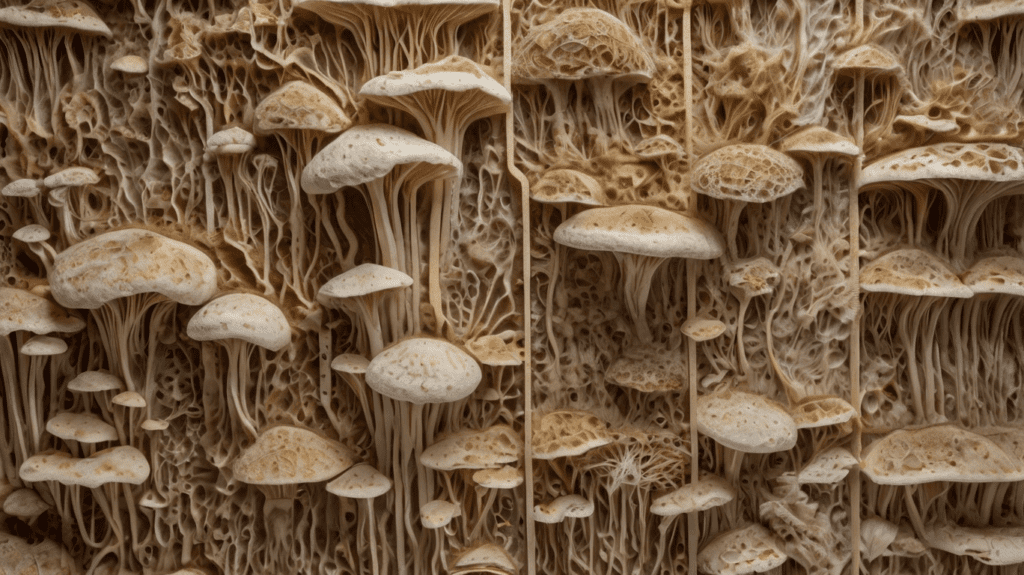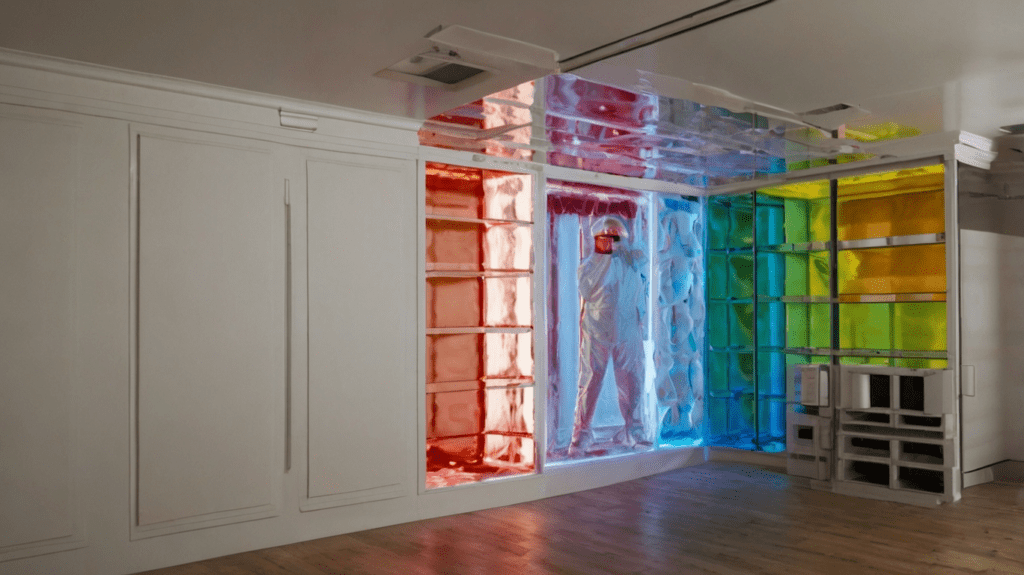As an interior designer with multiple experiences in sustainable home design, I’ve witnessed firsthand the growing demand for eco-friendly building materials. One area where this trend has made significant strides is in home insulation.
Gone are the days when fiberglass and foam were the only options available. Today, we have a wealth of innovative, environmentally conscious alternatives that not only keep our homes comfortable but also help reduce our carbon footprint.
In this article, I’ll share my top picks for eco-friendly insulation alternatives, drawing from my personal experiences working with clients who are passionate about creating sustainable, energy-efficient homes. Whether you’re renovating an old Victorian or building a modern eco-home from the ground up, these options will help you achieve both comfort and environmental responsibility.
1. Sheep’s Wool Insulation: Nature’s Cozy Blanket
When I first suggested sheep’s wool insulation to a client renovating a 19th-century farmhouse, they were skeptical. But after explaining its benefits, they were sold, and the results were impressive.

Pros of Sheep’s Wool Insulation:
- Excellent thermal and acoustic insulation properties
- Naturally fire-resistant and moisture-regulating
- Renewable and biodegradable
- Can absorb and neutralize indoor air pollutants
Cons of Sheep’s Wool Insulation:
- Higher upfront cost compared to traditional insulation
- May require treatment for pest resistance
Installation Tips: Sheep’s wool insulation comes in batts or rolls, similar to fiberglass. It can be easily installed between studs, joists, and rafters. For best results, ensure the area is clean and dry before installation.
My Experience: In the farmhouse project, we used sheep’s wool in the attic and walls. The clients reported a noticeable improvement in temperature regulation and indoor air quality. Plus, they loved the idea of using a natural, renewable material in their historic home.
2. Recycled Denim Insulation: From Blue Jeans to Green Homes
Who knew your old jeans could keep your house warm? Recycled denim insulation is a creative solution that repurposes post-consumer denim and cotton fibers.


Pros of Recycled Denim Insulation:
- Made from 80% post-consumer recycled content
- Excellent sound absorption properties
- No harmful chemicals or irritants
- Easy to handle and install
Cons of Recycled Denim Insulation:
- Can be more expensive than fiberglass
- May not be suitable for very damp environments
Installation Tips: Denim insulation is available in batts and can be installed similarly to fiberglass. Wear gloves and a dust mask during installation, even though it’s less irritating than fiberglass.
My Experience: I used recycled denim insulation in a music room project for a client who wanted excellent sound insulation. Not only did it perform wonderfully, but it also became a conversation piece when the client hosted gatherings.
3. Cork Insulation: The Bark with a Bite
Cork insulation is derived from the bark of cork oak trees, making it a highly renewable resource. It’s a versatile material that I’ve found particularly useful in modern, minimalist designs.


Pros of Cork Insulation:
- Excellent thermal and acoustic insulation
- Naturally resistant to mold, mildew, and pests
- Fire-resistant and water-resistant
- Can be left exposed for an aesthetic feature
Cons of Cork Insulation:
- More expensive than traditional insulation
- Limited availability in some regions
Installation Tips: Cork insulation comes in boards or panels. It can be easily cut to size and installed using adhesive or mechanical fasteners. For exposed applications, consider using decorative cork panels for added visual interest.
My Experience: In a recent project for an eco-conscious tech entrepreneur, we used cork insulation boards as both insulation and a decorative wall feature in the home office. The client loved the natural texture and warmth it brought to the space.
4. Cellulose Insulation: From the Bookshelf to the Attic
Made primarily from recycled paper products, cellulose insulation is an excellent option for those looking to reduce waste and improve their home’s energy efficiency.


Pros of Cellulose Insulation:
- High recycled content (up to 85%)
- Excellent thermal performance
- Good sound absorption properties
- Can be blown into existing walls with minimal disruption
Cons of Cellulose Insulation:
- Requires professional installation for best results
- Can settle over time, reducing effectiveness if not properly installed
Installation Tips: Cellulose insulation is typically blown into wall cavities or attic spaces using specialized equipment. It’s best to hire a professional for installation to ensure proper density and coverage.
My Experience: I recommended cellulose insulation for a client who wanted to improve the energy efficiency of their 1960s ranch-style home without major renovations. The blown-in installation process was quick and minimally invasive, and the clients saw a significant reduction in their energy bills.
5. Hempcrete: The Green Building Block
Hempcrete is a biocomposite material made from hemp hurds, lime, and water. While not as common as other alternatives, it’s gaining popularity in eco-conscious building circles.


Pros of Hempcrete:
- Excellent thermal mass and insulation properties
- Naturally resistant to mold and pests
- Carbon-negative material (absorbs more CO2 than produced during manufacturing)
- Can be used as a structural element in some applications
Cons of Hempcrete:
- Requires specialized knowledge for installation
- May not be suitable for all climate types
- Limited availability and higher cost
Installation Tips: Hempcrete is typically mixed on-site and cast into forms around a structural frame. It’s best to work with contractors experienced in hempcrete construction for optimal results.
My Experience: I had the opportunity to work on a small hempcrete studio project for an artist client. The material’s natural texture and excellent temperature regulation created a perfect working environment, and the client was thrilled with its eco-friendly credentials.
6. Aerogel Insulation: Space-Age Technology for Your Home
Aerogel is a synthetic ultralight material derived from a gel, where the liquid component is replaced with gas. It’s one of the most effective insulating materials available.


Pros of Aerogel Insulation:
- Extremely high insulation value (R-value)
- Thin profile, ideal for space-constrained applications
- Non-flammable and hydrophobic
- Long lifespan
Cons of Aerogel Insulation:
- Very expensive compared to traditional insulation
- Can be brittle and produce dust during installation
- Limited availability
Installation Tips: Aerogel insulation typically comes in blanket form and can be cut to size with a utility knife. Wear protective gear during installation to avoid inhaling dust particles.
My Experience: I used aerogel insulation in a challenging renovation project where we needed maximum insulation in a very thin wall cavity. Despite the high cost, the client was amazed at the performance and the space saved.
7. Mycelium Insulation: Fungi for the Future
One of the most exciting developments in eco-friendly insulation is mycelium-based materials. Mycelium is the root structure of mushrooms, and it can be grown into specific shapes for use as insulation.


Pros of Mycelium Insulation:
- Completely biodegradable and compostable
- Excellent fire-resistant properties
- Good sound absorption
- Can be grown to fit specific spaces
Cons of Mycelium Insulation:
- Still in the early stages of commercialization
- Limited availability
- Long-term performance data is still being gathered
Installation Tips: As this is a newer technology, installation methods are still evolving. Currently, mycelium insulation is typically grown into blocks or panels that can be fitted into wall cavities.
My Experience: While I haven’t had the opportunity to use mycelium insulation in a full-scale project yet, I’ve been following its development closely. I recently visited a prototype home using mycelium insulation, and I was impressed by its performance and the minimal environmental impact.
8. Straw Bale Insulation: Back to Basics
Straw bale construction and insulation is an age-old technique that’s seeing a revival in eco-friendly building circles.


Pros of Straw Bale Insulation:
- Excellent insulation properties
- Renewable and biodegradable
- Can be sourced locally in many areas
- Provides good sound insulation
Cons of Straw Bale Insulation:
- Requires careful moisture management
- Not suitable for all climate types
- May require specialized construction techniques
Installation Tips: Straw bale insulation is typically used in new construction, where the bales form part of the wall structure. It’s crucial to work with experienced straw bale builders to ensure proper installation and moisture management.
My Experience: I had the pleasure of working on a straw bale home project for a family looking to build an eco-friendly farmhouse. The thick walls provided excellent insulation, and the clients loved the organic, earthy feel of the home.
9. Vacuum Insulated Panels (VIPs): High-Tech Thermal Barriers
Vacuum Insulated Panels are a high-performance insulation option that uses vacuum-sealed panels to achieve extremely high R-values in thin profiles.


Pros of Vacuum Insulated Panels (VIPs):
- Extremely high insulation value
- Very thin profile, ideal for space-constrained applications
- Long lifespan if not damaged
Cons of Vacuum Insulated Panels (VIPs):
- Expensive compared to traditional insulation
- Can lose effectiveness if punctured
- Difficult to cut or modify on-site
Installation Tips: VIPs must be installed with great care to avoid puncturing. They’re typically used in specific applications where high insulation value is needed in a thin space, such as refrigerator walls or sliding door panels.
My Experience: I used VIPs in a renovation project where we needed to maximize floor space in a small urban apartment. The thin profile of the VIPs allowed us to add significant insulation without losing precious square footage.
10. Phase Change Materials (PCMs): Dynamic Temperature Regulation
Phase Change Materials are substances that absorb and release heat as they change between solid and liquid states, helping to regulate indoor temperatures.


Pros of Phase Change Materials (PCMs):
- It can help reduce peak heating and cooling loads
- Works passively, without the need for additional energy input
- It can be incorporated into various building materials
Cons Phase Change Materials (PCMs):
- Higher upfront cost
- Performance can vary depending on climate and application
- May require careful system design for optimal performance
Installation Tips: PCMs can be incorporated into building materials like drywall or installed as separate panels. It’s important to work with manufacturers and engineers to design a system that works for your specific climate and building needs.
My Experience: I recently incorporated PCM-enhanced drywall in a home office renovation project. The client reported more stable temperatures throughout the day and reduced reliance on their HVAC system.
Conclusion: Embracing Eco-Friendly Insulation for a Sustainable Future
As we’ve explored in this list, the world of eco-friendly insulation is diverse and exciting. From natural materials like sheep’s wool and cork to high-tech solutions like aerogels and phase change materials, there’s an option for every project and preference.
As an interior designer committed to sustainable practices, I’m thrilled to see the growing interest in these alternatives. Not only do they offer excellent insulation properties, but they also contribute to healthier indoor environments and reduce our impact on the planet.
When considering insulation for your next project, I encourage you to look beyond traditional materials. Consider factors like local availability, climate suitability, and your specific project needs. Don’t be afraid to mix and match different insulation types to achieve the best performance and sustainability outcomes.
Remember, choosing eco-friendly insulation is not just about energy efficiency – it’s about creating homes that are healthy, comfortable, and in harmony with our environment. Whether you’re building a new home or upgrading an existing one, these innovative insulation alternatives offer exciting possibilities for creating spaces that are truly sustainable from the inside out.
As we continue to push the boundaries of green building technology, I’m excited to see what new insulation innovations will emerge. The future of eco-friendly home design is bright, and it starts within our walls.



